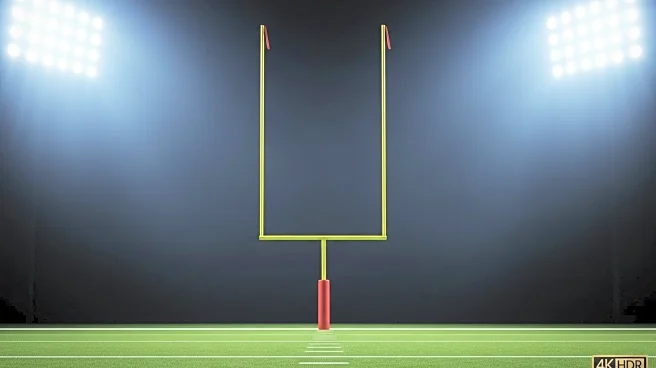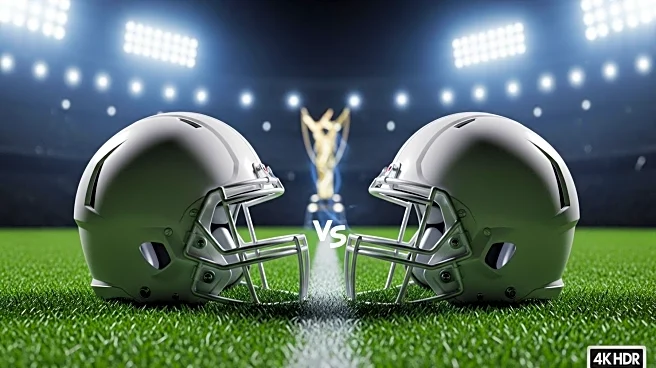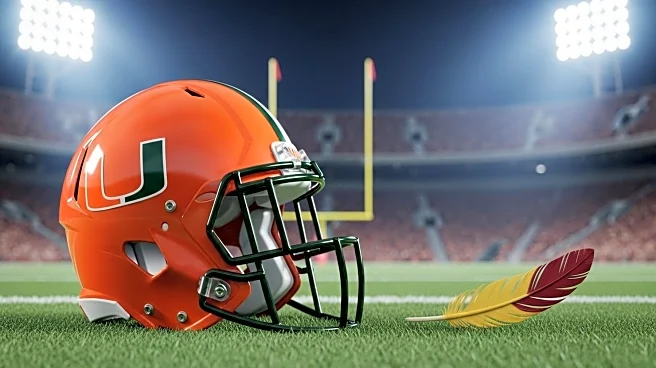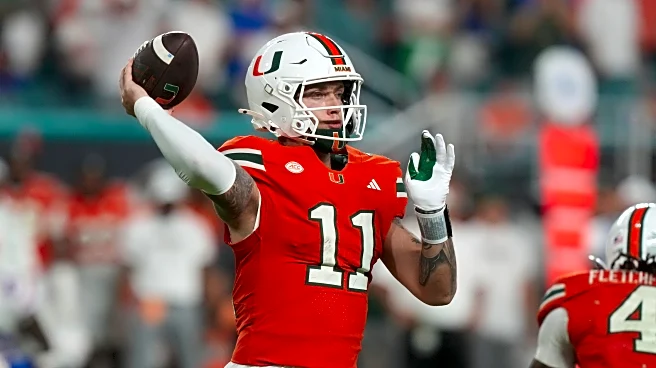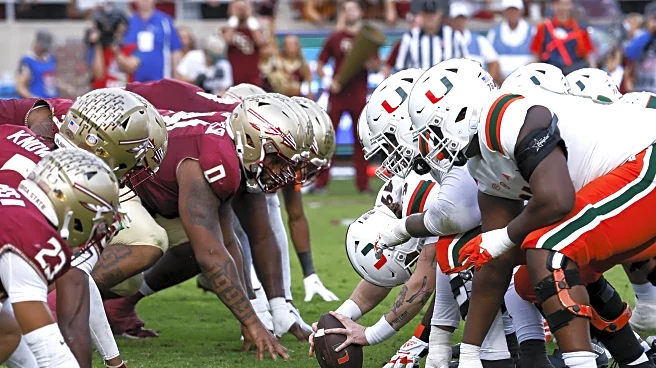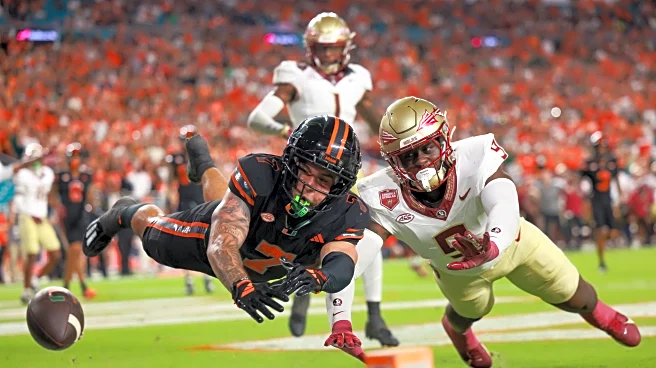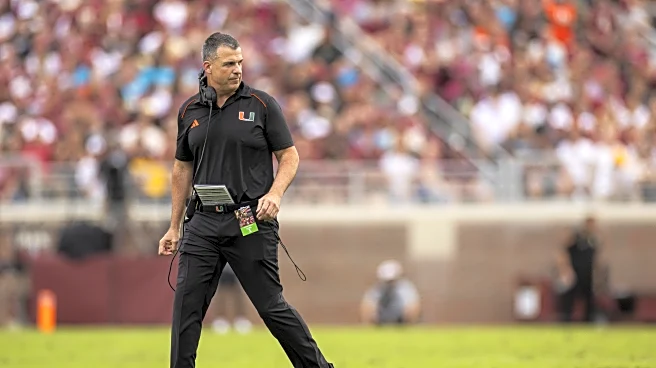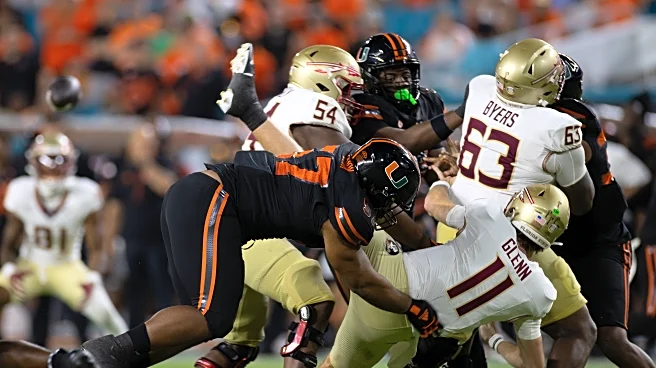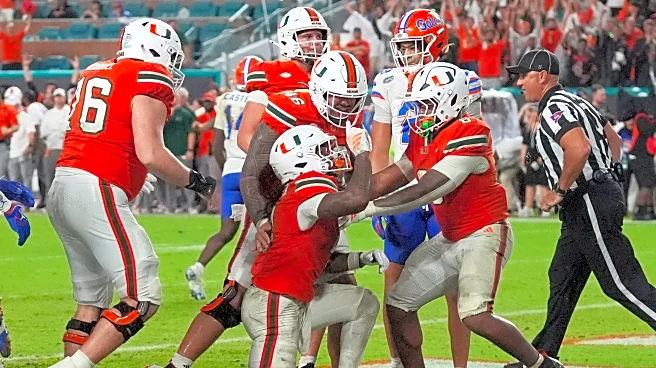What's Happening?
The Miami-Florida State football rivalry is marked by a series of games famously known as 'Wide Right,' where crucial field goal attempts by Florida State went wide of the uprights, leading to Miami victories. The first 'Wide Right' occurred on November 16, 1991, when Florida State's kicker Gerry Thomas missed a 34-yard field goal, allowing Miami to win 17-16. This pattern repeated in subsequent years, notably in 1992 and 2000, with similar outcomes. These games have become a defining feature of the rivalry, with Miami leading the all-time series 36-33. The rivalry continues to be significant, with both teams often ranked highly and games having national championship implications.
Why It's Important?
The 'Wide Right' games have had a lasting impact on the Miami-Florida State rivalry, influencing the perception and morale of both teams and their fanbases. For Miami, these victories have reinforced their dominance in the series, while for Florida State, the repeated narrow losses have been a source of frustration. The rivalry is a significant event in college football, drawing national attention and affecting rankings and bowl game selections. The psychological impact on players and fans, as well as the historical significance of these games, underscores the intense competition and high stakes involved in this rivalry.
What's Next?
As the rivalry continues, both teams will aim to overcome past challenges and secure victories in future matchups. The games will likely remain highly competitive, with both teams striving to improve their records and rankings. The ongoing rivalry will continue to attract significant media attention and fan interest, contributing to the broader landscape of college football. Future games may also see new narratives and moments that could redefine the rivalry, adding to its rich history.
Beyond the Headlines
The 'Wide Right' phenomenon highlights the unpredictable nature of sports and the fine margins that can determine the outcome of games. It also underscores the pressure on athletes in high-stakes situations and the role of mental resilience in sports performance. The rivalry exemplifies how specific moments can become emblematic of broader competitive dynamics, influencing team strategies and fan engagement. The cultural and emotional significance of these games extends beyond the field, impacting community identities and college sports traditions.

